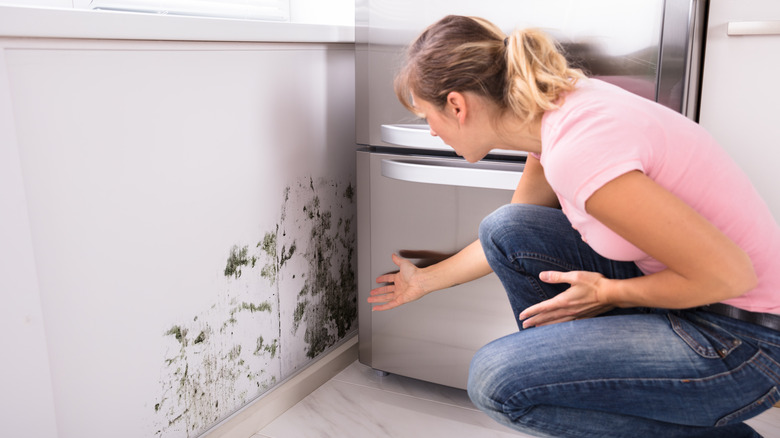Surprising Places Mold Could Be Hiding In Your Kitchen
Mold is a common fungus that makes floating spores in the air. It can live anywhere and thrives in high-moisture environments. The spores it sends into the air can be harmful to your health and the health of your pets, so it is important to detect and remove mold as early as possible (via Centers for Disease Control and Prevention). We often think mold lingers in the bathroom and attic, but your kitchen is just as susceptible as other parts of your home.
Mold loves moisture, so the kitchen provides multiple spots that are ideal for mold growth. One of these is the detergent chamber of your dishwasher. "Dark and damp are the two factors needed for mold to grow. To prevent the mold from growing in here, keep the drawer open after every wash so that the chamber can dry out," real estate professional and home style expert Sabine Schoenberg told Country Living. "Stay away from creating a damp, dark place — that'll only attract the mold!" Keep the door propped open between cycles to allow it to air out and prevent mold growth.
Anywhere dark and damp can attract mold
One of the most common places to find mold is underneath sinks. Even the smallest leak in your pipe can turn into a breeding ground for mold. "Where there is a leaky window or a leaky pipe, over time there will be mold," Schoenberg told Country Living. "Don't take leaks around windows and doors or under the sink lightly — mold issues can arise faster than you can say, 'I'll get to it tomorrow.'"
Another surprising place you can find mold in your kitchen? Your sponge. According to Bob Vila, the average kitchen sponge contains 45 billion bacteria per square centimeter. You can keep your sponge clean by throwing it in the dishwasher frequently and replacing it every two weeks. Ice and water dispensers also hold a lot of moisture and mold growth inside can lead to funky-tasting water. Give your ice and water dispensers a deep clean at least once a month.
Anything that doesn't get good airflow is also at risk of developing mold. This includes cabinets, blenders, coffee makers, and even microwaves. Leave doors and lids open every once in a while to allow air to dry out any residual moisture. You should also perform a deep clean of all appliances every month or so to keep them spotless.


